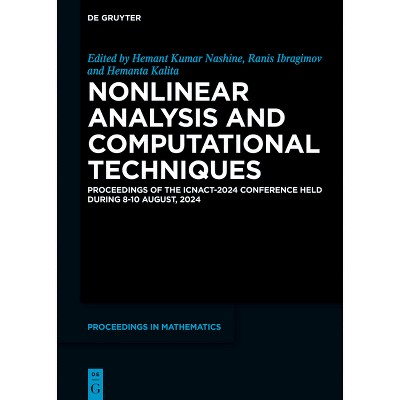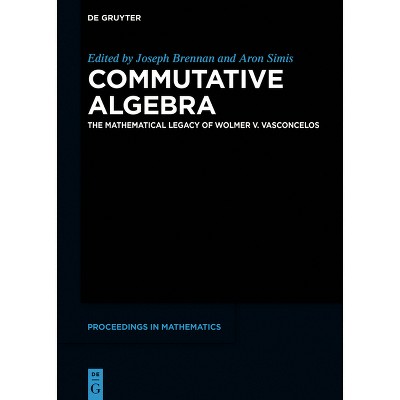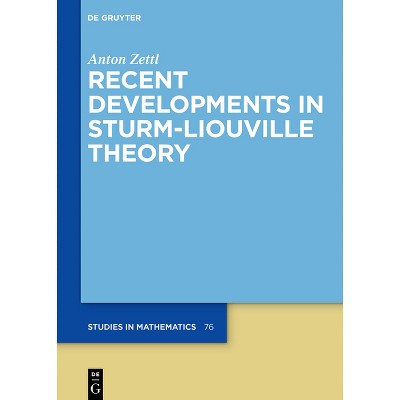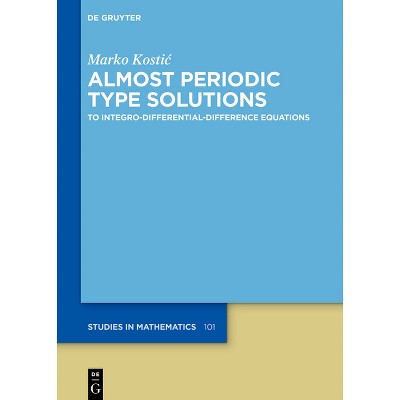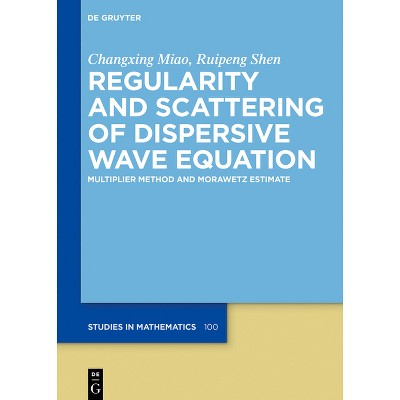Compact Closed 2-Categories - (De Gruyter Studies in Mathematics) by Nick Gurski & Juan Orendain & David Yetter (Hardcover)

About this item
Highlights
- While the Cobordism Hypothesis provides a translation between topological and categorical structures, the subject of fusion categories arising from representations of finite groups has shown the need for a robust theory of duality in monoidal 2-categories.
- About the Author: Nick Gurski is currently an Associate Professor in the Department of Mathematics, Applied Mathematics and Statistics at Case Western Reserve University.
- 850 Pages
- Mathematics, Logic
- Series Name: de Gruyter Studies in Mathematics
Description
Book Synopsis
While the Cobordism Hypothesis provides a translation between topological and categorical structures, the subject of fusion categories arising from representations of finite groups has shown the need for a robust theory of duality in monoidal 2-categories. This book intertwines 3-dimensional category theory with enriched and symmetric monoidal 2-categories to present a comprehensive foundation for duals in dimension two. This framework is presented using wire diagrams, a typographical tool that combines the geometric appeal of ordinary string diagrams with the clarity of standard commutative diagrams in category theory. Chapters on enriched 2-categories, closed 2-categories, and compact closed 2-categories build the theory from the ground up and in full detail. Shorter appendices on technical topics from higher category theory such as icons, strictification theorems, and computads provide readers with concise explanations of key results, as well as references for researchers interested in more depth. The book concludes with a chapter of examples from algebra and topology, including a detailed construction for the example of cobordisms.
About the Author
Nick Gurski is currently an Associate Professor in the Department of Mathematics, Applied Mathematics and Statistics at Case Western Reserve University. He received his PhD in 2006 from the University of Chicago under the supervision of Peter May, and he held an NSF Postdoctoral Fellowship at Yale University with Mikhail Kapranov. His work is in two- and three-dimensional category theory, with a particular emphasis on applications in homotopy theory. Recent work has focused on symmetric monoidal structures and invertible objects, including a proof of the two-dimensional stable homotopy hypothesis.
David Yetter is a University Distinguished Professor in the Department of Mathematics at Kansas State University. He received his PhD in 1984 from the University of Pennsylvania under the supervision of Peter Freyd, with whom he was subsequently one of the groups which independently discovered the HOMFLY-PT polynomial invariant of classical knot and links. He is the author of over 50 papers, largely in topological quantum field theory, but covering areas ranging from topos theory to knot theory and from classical geometry to operator algebras.
Juan Orendain is a Visiting Assistant Professor in the Department of Mathematics, Applied Mathematics and Statistics at Case Western Reserve University. He received his PhD in 2014 from the National Autonomous University of Mexico under the supervision of Francisco Raggi and Jose Rios. He has been a postdoctoral fellow at the University of Tokyo, with Yasuyuki Kawahigashi, and the National University of Mexico, with Robert Oeckl. His work is in two-dimensional category theory, with an emphasis on the study of symmetric monoidal equipments, and their applications to mathematical physics. Recent work has focused on categorical models of higher lattice gauge theories and quantum theories.
Shipping details
Return details
Trending Book Pre-Orders






